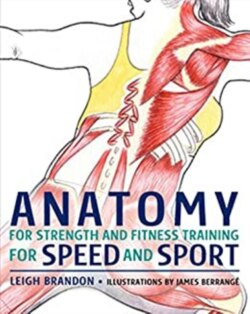Читать книгу Anatomy for Strength and Fitness Training for Speed and Sport - Leigh Brandon - Страница 12
На сайте Литреса книга снята с продажи.
PREPARATION FOR SPEED TRAINING
ОглавлениеAs the illustration below shows, speed development is at the peak of performance. Before you get to the peak, you have to build a solid base. Over the years I have explained to my athletes and clients that to build a strong, powerful, quick body, you have to treat it like building a skyscraper.
Before you can construct any building, you need to build solid foundations. This is also true for developing a body that is required to move quickly. Buildings need to be able to withstand earthquakes, extreme weather and other unforeseen stresses. Moving the human body at speed is similar to a building during an earthquake: it has to handle a lot of stress without breaking down.
With any building, the stronger the foundations, the taller and stronger it can be. The same is true for the athlete. A saying I find useful here is ‘the wider the base, the taller the peak’. Therefore, it is important that a strong base of flexibility, stability and movement skill is achieved before moving to maximal strength.
In some sports, it is advantageous to be very strong regardless of body weight. For instance, a shot putter or heavyweight boxer has no restrictions on body weight. However, some sports have weight categories or it is advantageous to be smaller, for instance if you’re a figure skater or a jockey. An athlete who does not have to consider their weight requires ‘absolute strength’, whilst an athlete who has to consider their body weight requires ‘relative strength’. Relative strength means that the athlete has to maximize their strength without increasing body weight (see page 79).
Therefore, the athlete has to decide whether they require muscle hypertrophy as part of their base conditioning phase.
Beginners should spend the first one to two years developing their skill of movement and preparing their bodies for the higher levels of stress of maximal strength and speed development in order to reduce the likelihood of injury.
Lower intensity agility, plyometric and speed drills can be used prior to maximal strength training (see table one on page 102). These exercises are a good introduction to this type of training. However, the development of true optimal speed will occur following maximal strength training and higher intensity agility, plyometric and speed training.
To move the body quickly, you are required to generate as much force (peak force) as possible in the shortest possible time to move your body weight and perhaps the weight of an implement, ball or opponent. As peak force is required, the stronger you are, the more force you can generate. This is why maximal strength training is so crucial for power and speed development.
Maximal strength can then be followed by a combination of power, agility, plyometric and speed drills to achieve optimal speed for your sport.
